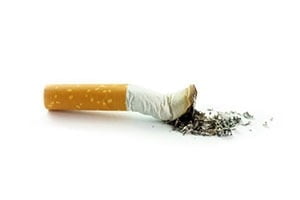The current use of tobacco among students (13-15 years) across the States/ UTs ranged from the highest in Arunachal Pradesh and Mizoram (58% each) to the lowest in Himachal Pradesh (1.1%) and Karnataka (1.2%), reveals The fourth round of Global Youth Tobacco Survey (GYTS-4) 2019.
Union health and family welfare minister Mansukh Mandaviya presided over the release of The National Fact Sheet GYTS-4, 2019.
The fourth round of the Global Youth Tobacco Survey (GYTS-4) was conducted in 2019 by the International Institute for Population Sciences (IIPS) under the Ministry of Health and Family Welfare (MoHFW). The survey was designed to produce national estimates of tobacco use among school-going children aged 13-15 years at the state level and Union Territory (UT) by sex, location of school (rural-urban), and management of a school (public-private). The first three rounds of GYTS were conducted in 2003, 2006, and 2009.
Madaviya emphasised the role of teachers as most crucial in creating awareness among children and their parents about harm due to tobacco use and for shaping the attitude of children in this regard. He said, “The more and the sooner, we create awareness among children about harms due to tobacco use, the better will be the outcomes in terms of reduction in the prevalence of tobacco use among children and consequently among adults.” ‘Harmful effects of tobacco use’ should be incorporated in school curricula at various levels starting right from the primary school level, he added.
A total of 97,302 students from 987 schools including 544 public and 443 private schools participated in the survey, of which, 80,772 students aged 13-15 years were considered for reporting. The objective of the survey was to provide information on tobacco use, cessation, second-hand smoke, access and availability, exposure to anti-tobacco information, awareness and receptivity to tobacco marketing, knowledge, and attitudes.
The fact sheet reveals that nearly one-fifth of the students aged 13-15 used any form of tobacco product (smoking, smokeless, and any other form) in their life. However, the current use (during the last 30 days) was 8.5%. Between the last two surveys, the current use declined by 42% (2009-2019). The survey states that the prevalence of tobacco use among boys was 9.6% and among girls was 7.4%, while the prevalence of smoking tobacco was 7.3% and smokeless tobacco was 4.1%. Even use of e-cigarette among the students was 2.8%. The use of any form of tobacco was higher among boys than girls.
In regard to the age of initiation of tobacco, 38% of cigarettes, 47% of bidi smokers and 52% of smokeless tobacco users initiated the use before their 10th birthday. The median age at initiation of cigarette and bidi smoking, and smokeless tobacco use were 11.5 years, 10.5 years, and 9.9 years respectively. As far as cessation was concerned 2 in 10 current smokers tried to quit smoking in the past 12 months and another 2 in 10 students wanted to quit smoking now. 27% of current users of smokeless tobacco tried to quit using in the past 12 months and another 25% wanted to quit now. According to the survey, 29.5% of the students were exposed to second-hand smoke (11.2% at home, 21.2% inside enclosed public places, 23.4 at outdoor public places).
Regarding access and availability, the survey reveals that 69% of current cigarette smokers and 78% of current bidi smokers bought cigarettes/bidis from a store, paan shop, street vendor or vending machine. Among the current smokers who bought cigarettes/bidis, 45% of cigarette smokers and 47% of bidi smokers were not refused because of their age.
According to the fact sheet, 52% of students noticed anti-tobacco messages in the mass media, while 18% of students noticed tobacco advertisements or promotions when visiting points of sale. 85% of school heads were aware of COTPA, 2003, while 83% of schools were aware of the policy to display ‘tobacco-free school’ boards.
